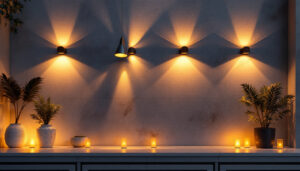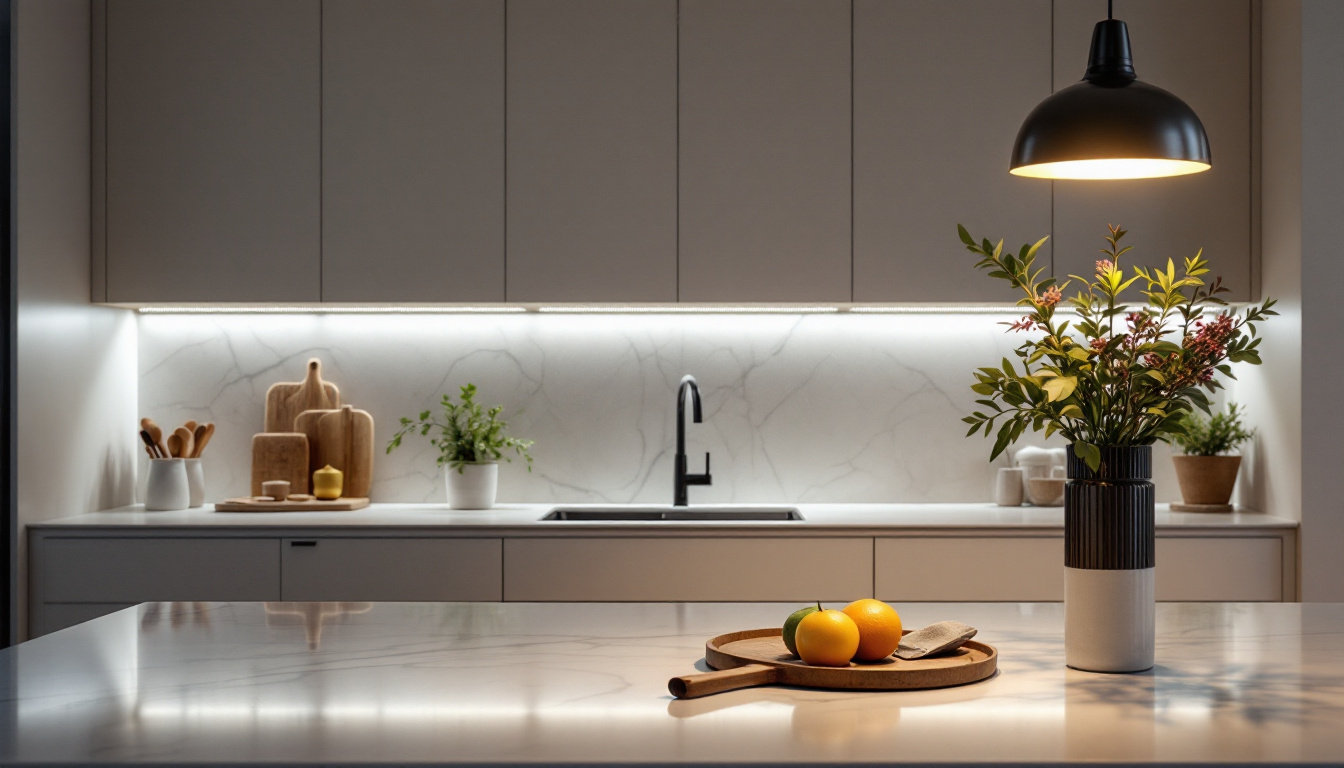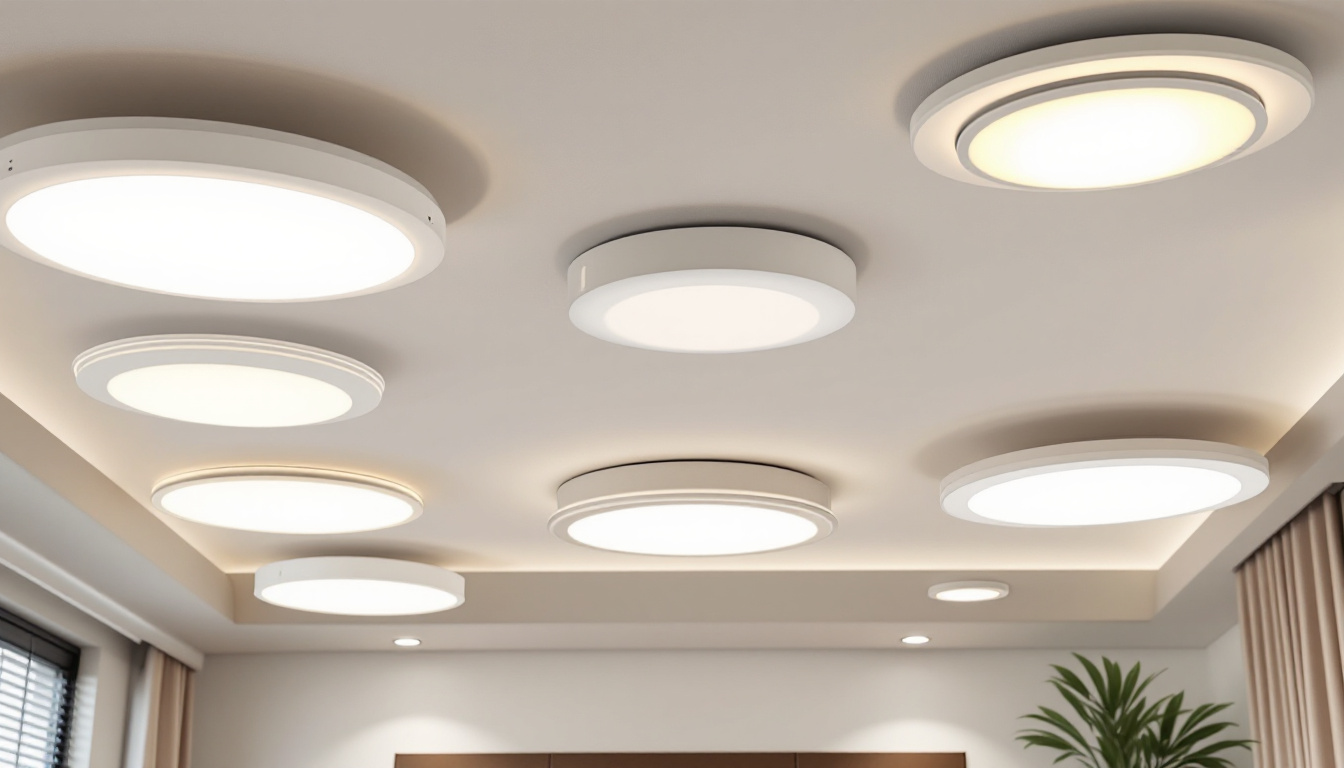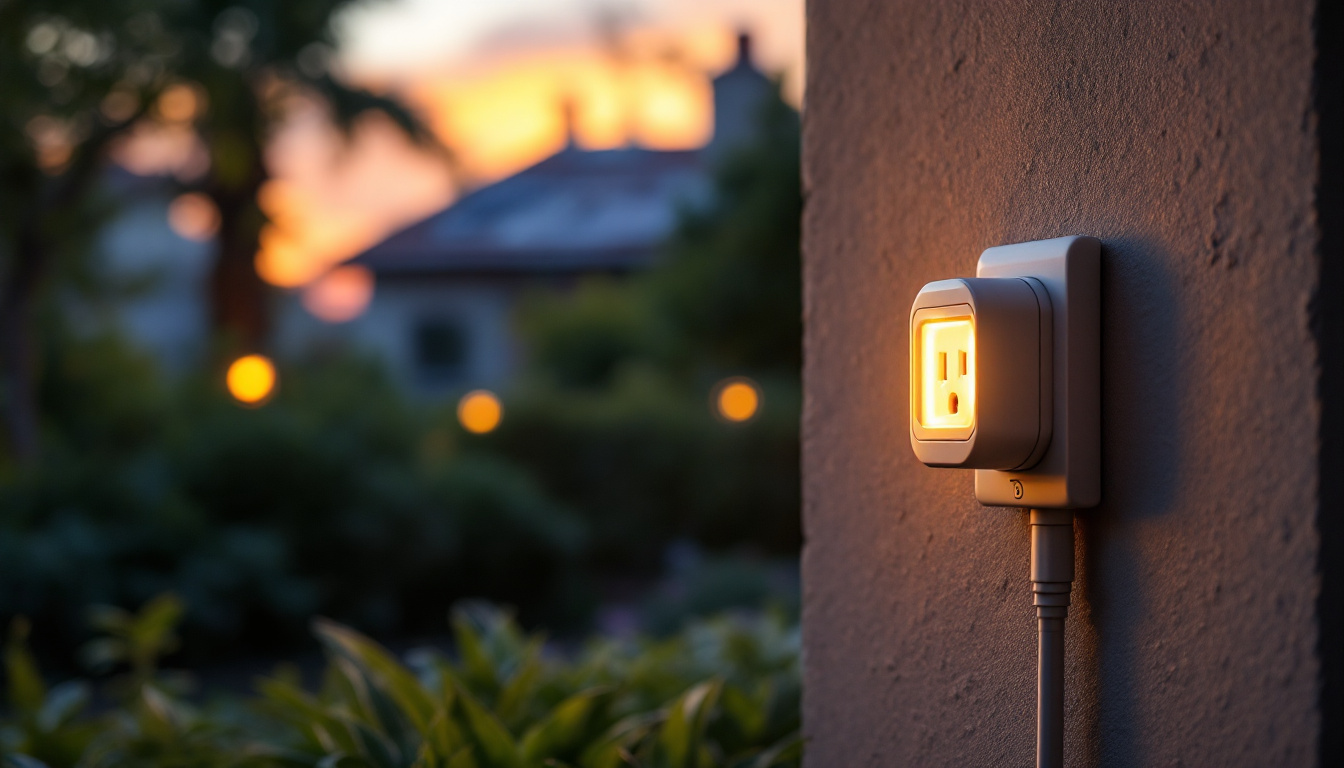

Undercounter lighting has become a staple in modern kitchen design, providing both functional illumination and aesthetic appeal. Positioned beneath cabinets, this type of lighting enhances visibility on countertops while creating a warm and inviting atmosphere. For lighting contractors, understanding the nuances of undercounter lighting is essential when advising clients on their kitchen projects.
There are various types of undercounter lighting options available, including LED strips, puck lights, and fluorescent fixtures. Each option comes with its own set of advantages and drawbacks, making it crucial for contractors to assess the specific needs of a kitchen space before making recommendations.
One of the primary benefits of undercounter lighting is improved task lighting. Whether it’s chopping vegetables or reading a recipe, having adequate light directly over work surfaces can significantly enhance a homeowner’s kitchen experience. This type of lighting reduces shadows and provides a clear view of the work area, which is especially important in kitchens where precision is key.
In addition to functionality, undercounter lighting also contributes to the overall ambiance of the kitchen. Soft, diffused light can create a cozy atmosphere, making the kitchen a more inviting space for family gatherings and entertaining guests. Furthermore, undercounter lighting can be used to highlight architectural features or decorative elements, adding a touch of elegance to the kitchen design.
When it comes to undercounter lighting, there are several options to consider. LED strip lights are popular for their versatility and energy efficiency. They can be easily cut to size and installed in tight spaces, making them ideal for various cabinet configurations. Puck lights, on the other hand, offer a more focused beam of light and can be strategically placed to illuminate specific areas.
Fluorescent fixtures are another option, providing bright, even light over larger surfaces. However, they may not always be the most aesthetically pleasing choice. Each type of undercounter lighting has its own unique characteristics, and understanding these can help contractors make informed decisions based on their client’s preferences and needs.
Moreover, the choice of color temperature can also play a significant role in the effectiveness of undercounter lighting. Warmer tones (around 2700K to 3000K) can create a welcoming environment, while cooler tones (4000K and above) can enhance focus and concentration, making them ideal for task-oriented areas. Additionally, dimmable options are increasingly popular, allowing homeowners to adjust the brightness according to the time of day or the mood they wish to create. This flexibility not only enhances the functionality of the kitchen but also allows for a personalized touch in the overall design.
Another important consideration is the installation method. Some undercounter lighting systems come with adhesive backing, making them easy to install without the need for professional help, while others may require hardwiring or the use of connectors. Contractors should also be aware of the latest trends in smart lighting technology, which allows homeowners to control their undercounter lights via smartphone apps or voice commands, adding a layer of convenience and modernity to the kitchen experience.
While undercounter lighting is a popular choice, it is essential to consider alternative lighting solutions that may also serve the kitchen effectively. Options such as pendant lights, recessed lighting, and track lighting can provide different benefits and aesthetics, making it important for contractors to weigh the pros and cons of each.
Pendant lights have gained popularity in kitchen design due to their ability to add a decorative element while providing functional lighting. Hanging from the ceiling, they can create a focal point above kitchen islands or dining areas. However, pendant lights may not provide the same level of task lighting as undercounter options, particularly for countertop workspaces.
Contractors should consider the height and placement of pendant lights to ensure they do not obstruct views or create shadows. Additionally, the style of pendant lights can significantly influence the overall aesthetic of the kitchen, allowing for personalization based on the homeowner’s taste. For instance, a sleek, modern pendant can complement a contemporary kitchen, while a vintage-inspired fixture can add charm to a rustic space. Furthermore, the use of multiple pendant lights in a cluster can enhance the visual interest and create a warm ambiance, making the kitchen feel more inviting.
Recessed lighting is another alternative that offers a clean and modern look. Installed directly into the ceiling, these fixtures can provide general illumination while maintaining an uncluttered appearance. However, recessed lighting may not be sufficient for task lighting alone, particularly in areas where detailed work is performed.
To enhance the effectiveness of recessed lighting, contractors often recommend a layered lighting approach, combining it with undercounter lights for optimal visibility. This strategy allows for flexibility in lighting design, catering to both functional and aesthetic needs. Moreover, dimmable recessed lights can provide versatility, enabling homeowners to adjust the brightness according to the time of day or the specific activity being performed, whether it’s cooking, entertaining, or simply enjoying a quiet evening at home.
Track lighting provides versatility and adjustability, making it an appealing option for many kitchens. With multiple light heads on a single track, homeowners can direct light where it’s needed most. This flexibility can be particularly beneficial in kitchens with varying tasks and layouts.
However, track lighting may not provide the same level of focused illumination as undercounter options. Additionally, the visual impact of track lighting can vary greatly depending on the design and placement, necessitating careful consideration during installation. The choice of bulb type can also affect the overall ambiance; for instance, warm LED bulbs can create a cozy atmosphere, while cooler tones may lend a more energetic feel to the space. Furthermore, track lighting can be an excellent solution for highlighting artwork or architectural features in the kitchen, adding an extra layer of sophistication and style to the overall design.
When selecting lighting solutions for kitchens, several factors should be taken into account. These considerations can help contractors provide tailored recommendations that align with their clients’ preferences and the specific requirements of the space.
Understanding the primary tasks that will be performed in the kitchen is crucial. For example, if a client frequently engages in meal prep, undercounter lighting may be a priority to ensure adequate visibility. Conversely, if the kitchen is primarily used for entertaining, a combination of ambient and decorative lighting might take precedence.
Contractors should engage in conversations with clients to identify their specific needs and preferences. This dialogue can lead to a more personalized lighting design that enhances both functionality and aesthetics.
Energy efficiency is an increasingly important consideration in lighting design. LED options are typically the most energy-efficient, offering long lifespans and lower energy consumption compared to traditional incandescent or fluorescent bulbs. By recommending energy-efficient solutions, contractors can help clients reduce their energy bills while also contributing to sustainability efforts.
In addition to choosing energy-efficient fixtures, contractors should also consider the overall layout and design of the lighting plan. Utilizing dimmers and smart lighting controls can further enhance energy efficiency and provide homeowners with greater control over their lighting environment.
The visual impact of lighting cannot be underestimated. Lighting fixtures should complement the overall design of the kitchen, enhancing its style rather than detracting from it. Contractors should consider the color temperature of the light, as warmer tones can create a cozy atmosphere while cooler tones may lend a more modern feel.
Additionally, the design of the fixtures themselves should align with the kitchen’s aesthetic. Whether opting for sleek and modern designs or more traditional styles, the right lighting can significantly elevate the overall look and feel of the space.
Proper installation is critical to the performance and effectiveness of any lighting solution. For contractors, understanding the nuances of installation can help ensure that clients receive the best possible results.
The placement of lighting fixtures can greatly impact their effectiveness. For undercounter lighting, positioning is key to maximizing illumination on work surfaces. Fixtures should be installed close to the front edge of the cabinets to minimize shadows and provide even lighting across the countertop.
For pendant and track lighting, contractors should consider the height and spacing of fixtures to ensure they provide adequate light without obstructing views. Proper positioning can enhance both functionality and aesthetics, creating a harmonious balance in the kitchen design.
Electrical considerations are paramount when installing any lighting solution. Contractors should ensure that the wiring is up to code and that the electrical load is appropriate for the fixtures being installed. This is especially important for undercounter lighting, where multiple fixtures may be connected to a single circuit.
In addition, contractors should consider the accessibility of switches and controls. Installing dimmers or smart controls can enhance the user experience, allowing homeowners to easily adjust the lighting to suit their needs.
In the world of kitchen lighting, undercounter lighting remains a popular and effective choice for enhancing both functionality and aesthetics. However, understanding the alternatives and the unique needs of each kitchen is essential for lighting contractors when making recommendations.
By considering factors such as task needs, energy efficiency, and aesthetic appeal, contractors can provide tailored solutions that meet their clients’ expectations. Furthermore, proper installation and attention to detail can ensure that the lighting performs optimally, creating a beautiful and functional kitchen space.
Ultimately, the right choice in lighting can transform a kitchen, making it a welcoming and efficient environment for cooking, entertaining, and everyday living. By staying informed about the latest trends and technologies in lighting, contractors can continue to deliver exceptional results for their clients.
Ready to elevate your kitchen lighting designs with the perfect undercounter solutions? Look no further than LumenWholesale, where we provide contractors with the highest quality, spec-grade lighting products at the most competitive wholesale prices. Our extensive selection is designed to meet the highest industry standards, ensuring you deliver reliable and high-performance lighting for every kitchen project. Plus, with the convenience of free shipping on bulk orders, you can enjoy premium lighting solutions at the best value — all without hidden fees or compromises. Make the right choice for your clients and enhance your lighting projects by visiting Wholesale Lighting at the Best Value today.

Discover why purchasing strip lights in bulk from local distributors might not be the best choice.

Explore the pros and cons of false ceiling light covers versus alternative options in this insightful guide tailored for lighting contractors.

Discover the common pitfalls lighting contractors face when sourcing industrial lighting supplies and learn how to avoid them.

Discover how outdoor solar outlets are revolutionizing the lighting industry, offering contractors a sustainable and cost-effective solution for powering outdoor projects.
Get notified when NEW deals are released.
Optimize your budget with wholesale discounts.
Only top-quality, specification-grade lighting products.
No additional costs at checkout - what you see is what you pay.
We understand the unique needs of contractors.